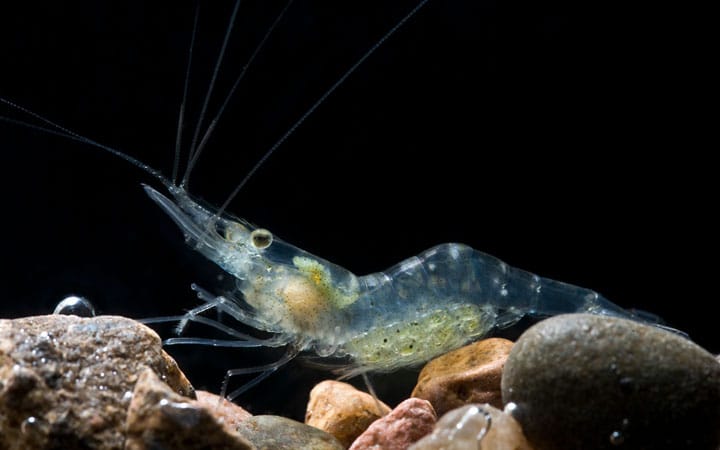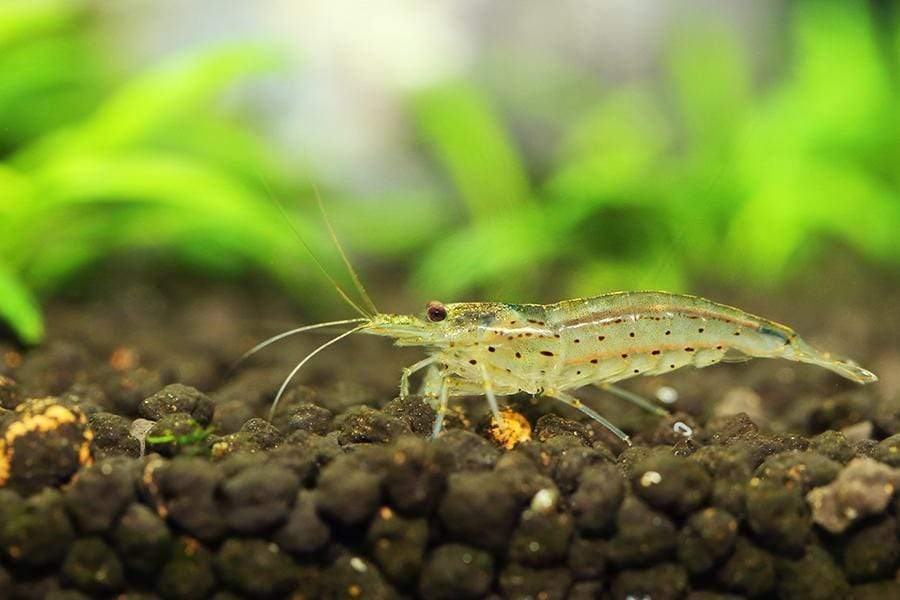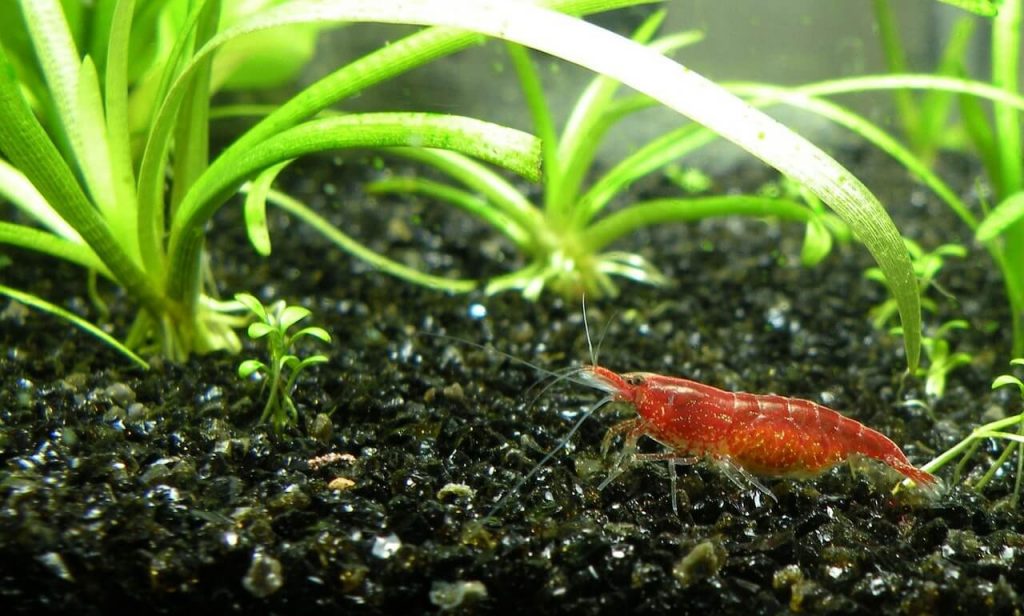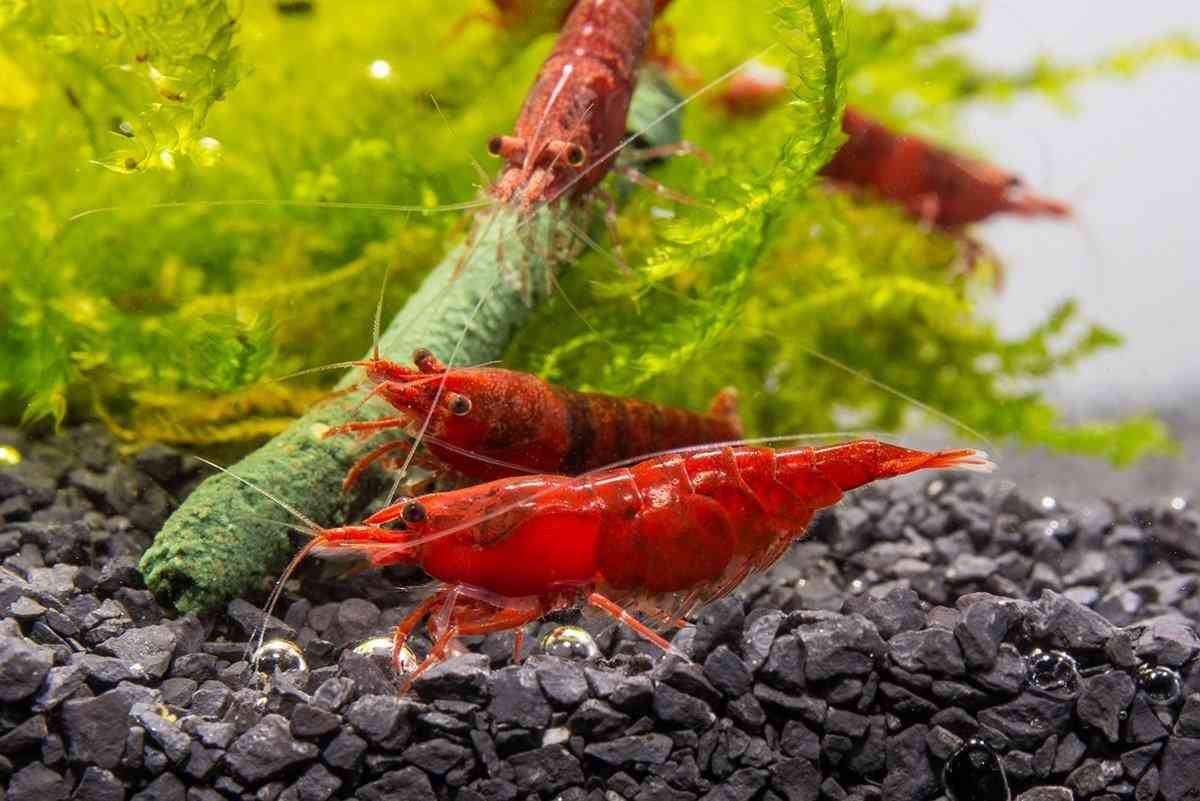Shrimp are well-known for their algae-eating ability. It’s awesome because they help you maintain good water and tank conditions from excessive algae. They even got the nickname aquarium clean-up crew.
Due to their abilities, shrimps are often kept in a fish tank, whether with other species or their own kind. Besides, it’s also pleasing to see tiny colorful creatures roam around your tank.
Now, are you interested in keeping your own shrimps? If so, there are several basic things you need to understand before you’re actually starting the project.
If you’re wondering what those basic knowledge are, you’re in the right place! Today, we’re going to discuss how many shrimp per gallon of water you could put in your tank, the requirements, and other fun stuff related to it. Let’s buckle up!
Table of Contents
How Many Shrimps Can Live Per Gallon of Water?
The amount of shrimps you can keep in the aquarium is based on several factors. First off, the shrimp types.
Each species is unique in its own way, and so are their habitat and tank condition needs. It’s not responsible to just put in whatever shrimp species you feel like to keep since the different type of shrimp surely requires different care too.
Here are the most common shrimps to be kept in aquariums. We’ll let you know how many shrimp you can put in your tank, based on their type.
Ghost Shrimp

Ghost shrimp has a unique appearance. They are translucent, which explained why they’re called ghosts.
Ghost shrimp is an omnivorous crustacean. As mentioned earlier, they regularly eat the excessive algae grown in the tank. But to ensure that they are well-nourished, you can feed them flakes, pellets, or veggies like zucchini and cucumber.
Water temperature ranging from 65-85°F (18-29°C) with a pH between 6.5-8.0 is ideal for ghosts shrimp. Normally, they can reach the age of one and a half years.
Ghost shrimp is petite, with a maximum size of 1.5 inches (3.8 cm) when they reach adulthood. With this size, you can keep 5 shrimps per gallon of water. Well, it is possible to keep more than that, maybe around 10.
But note that the number of shrimp you should keep does not merely depend on its size and species. You need to pay attention to the tank environment as well. How densely planted is your tank? Are there other species that live in it? Will you be able to maintain the water condition?
We recommend a 10-gallon tank to start your shrimp-keeping journey. Some say that 5 gallons will do, but if you’re a beginner, that’s not the best idea. Smaller tanks require more effort since it is more difficult to keep the water parameters stable.
Amano Shrimp

This is another one of the most popular shrimp in the aquarium industry. Amano shrimp is perhaps best known for its capability to devour a large number of algae. On top of that, they are hardy and easy to care for.
Just like the ghost shrimp, Amano is an omnivore. Besides feeding by doing their job, Amano shrimp will accept sinking pellets or frozen food. Vegetables like cucumber and zucchini will help balance their diet.
Amano shrimp can be recognizable by their physique. Normally, they are transparent or have a gray color base, with spots along with their bodies. This shrimp can grow up to 2 inches long.
So, how many Amano shrimp can you keep in the tank? Unlike the ghosts, this shrimp species needs more space. You can only keep one Amano shrimp per 3 or 4 gallons of water. More than that, you will likely face conflicts in your aquarium.
The best water conditions for Amano are temperature ranging between 70-80°F (21-27°C) and pH around 6.0-7.0. Quite different from what the ghosts require, right? If cared for properly, the Amano shrimp will stay for around two to three years.
To start housing them, we recommend a 20-gallon tank at least. There you can keep around 5 to 6 shrimps. If you wish to put more, you will have to upgrade your aquarium to a bigger size.
Red Cherry Shrimp

Don’t be fooled by their name. They are actually available in countless varieties of colors. It is an excellent choice to house them if you want to add a festive vibe to your tank.
The red cherry shrimp, like the Ghost and Amano shrimp, is of the dwarf shrimp family. They are very tiny, with an average size of 1-1.5 inches (2-3 cm).
Due to their small size, it’s no problem to keep the red cherry shrimp in nano tanks. If you want to start housing them, we suggest a 10-gallon tank to begin with. You can keep up to 50 cherry shrimps there since you can host 2 to 5 shrimps per gallon of water.
The most suitable water for the red cherries is a temperature around 68-78°F (20-25°C) and a pH of 6.5-7.5. In a healthy environment, the red cherry shrimp live from 1 to 2 years.
As for their food, you probably have guessed. These little shrimps are omnivores and natural scavengers. They eat algae, little worms, moss, and boiled vegetables. If you want to give them proceeded food, sinking pellets or flakes will do.
Different Tank Conditions for The Shrimp
Another factor that determines how many shrimp you can keep is the tank’s purpose. However, the purpose alone is too broad of a benchmark. You also need a precise tank capacity before estimating the amount of shrimp your tank can carry.
It is recommended by many to start your shrimp housing with a 10-gallon tank. The size is considered ideal because it’s not too small nor too big. Therefore, we’ll stick with a 10-gallon tank in terms of size.
Planted or Non-planted
Before putting the shrimp in the aquarium, you need to decide how you want the tank set up to be. Do you want to focus on the plants and decorations or the creatures in it?
If you choose the first option, it’s better to keep 10 at the start. You can let them breed until they reach an amount of approximately 20 to 25. Maybe that sounds a bit too little, knowing that the shrimp won’t take up much space.
But you need to consider that sometimes shrimps can be a bit more territorial. Sufficient hiding places are necessary if you want them to live in peace. Keeping them on a small amount will also emphasize the scenery in your tank. On the other hand, if you choose the second option, you can definitely house more than 25.
Breeding Tank
If you plan to breed your shrimp, it’s best to set your tank as a species-only tank. Meaning that you only keep groups of the same shrimp species there.
How many shrimps to start breeding, then? In this case, 10 up to 20, or even fewer, is ideal. It depends on the shrimp species you’re breeding.
An aquarium bigger than 10-gallon is also not essential. It will only widen the distance between each shrimp and make it more difficult for them to find each other.
One tip, make sure that you house more males compared to females. That will prevent unwanted overpopulation later. Even though a 10-gallon tank is comfortable enough for around 50 shrimps to live peacefully together, it will not be if the amount exceeded the maximum due to overbreeding.
Community Tank
Again, it depends on the species. In a community tank, you can house around 10 to 15 individuals of cherry or ghost shrimps. But if you want to introduce the Amano shrimps to the tank, you need to keep the group even smaller. We would recommend 5 at maximum.
All of these shrimps tend to eat creatures smaller than them. But Amano is bigger than the other two in particular. Thus, they are more likely to disturb or eat their tankmates.
And as for the cherries and the ghosts, they are the ones to be potential foods! All fish in the bigger size will definitely prey on them. But if there are plenty of hiding places, those tiny shrimps can surely survive and even thrive.
Tips for Your Shrimp-keeping Journey
Just like keeping fish in general, shrimps also need their habitat and tank conditions that need to be considered to make them happy and thrive in your aquarium. Here are some tips before you decide to add shrimp to your tank.
Pay Attention to Plants and Hiding Spots
Shrimps are territorial by nature. No matter if you put them in a species-only tank or community tank. They will not hesitate to fight each other to preserve their territories.
To avoid such unwanted cases and ensure that your shrimps feel safe, you can provide hiding places for them. Not too many until it overcrowds the tank, but just enough for the population.
For plants, we recommend lettuce and java moss. Both lettuce and java moss can be perfect hiding spots and natural food sources for your shrimp. Besides, they also help maintain the water conditions.
If you want to add decorations, that’s also an idea. You can get caves and driftwoods from your favorite fish store. The shrimps will absolutely love the settling places you provide them.
Sponge Filters
Shrimps are tiny. We are all aware of that. But due to their tiny size, they can be sucked in by the intake of your water filter. And of course, you don’t want that.
To prevent such accidents, you can use a sponge filter. Remember, this is only suitable for shrimp-only aquariums.
If you’re keeping your shrimp with other species, like fish, a sponge filter will not be adequate. But no worries, you can put a sponge filter head and wrap it around your filter’s intake.
One tank, One species
You may have known the reason if you read the previous sections thoroughly. But if you haven’t, it’s no problem. So why can you only keep one species in one aquarium?
Simple, different species of shrimp requires in different environments and conditions. Meaning that they thrive in diverse water temperatures, pH, and other water-related stuff.
If you insist on keeping different species in the same tank, well, you can try. But don’t be surprised if only one species thrive, and the other one is the total opposite.
You can add varieties in your shrimp-only tank keeping one species in different colors. For instance, red cherry and blue cherry shrimp. If they breed, you may end up having a very bright and colorful tank.
Peaceful Tankmates
It’s pretty obvious just by looking at this title. If you wish your shrimp to live together with other species, they must be peaceful ones.
Keeping aggressive fish and shrimp in one tank is a no-no. You cannot force them to get along. Instead of seeing the fish and the shrimp become friends, you might see your shrimp missing the next day.
Some fish you need to avoid being put together with shrimp are Cichlids, Angelfish, Oscars, and Betta fish.
That’s why your shrimp’s tank companion must be on the same level as them. That means the similar size and similar behavior. Smaller fish with a calm temperament are likely to mind their own business. They won’t bother peeking at the shrimp. Let alone preying on them.
Handling Overpopulation
Is it possible? Absolutely. If you care for your shrimp decently, they can thrive well and breed. Shrimp can lay around 20-50 eggs after spawning.
Even though not 100% of eggs will hatch, they still add to the community. The eggs only need around 25 days until they become shrimplets. What do you then? In case of the overcrowded tanks, there are some solutions to it.
First, you can upgrade your aquarium to a larger capacity. Second, get another tank and move some of the shrimp to a separate tank. It may sound like an easy task to perform, but it is not.
Shrimp are very fragile and will need adjustments before you move them to a new place. If you moved them to a new environment suddenly, the chance is they will get distressed. If that happened, you might need to say goodbye to them.
The next thing you can do to handle too much shrimp is to give them to the fish store. They might accept and pay you if the shrimp are in excellent condition. Or you might get something else in return, fish food perhaps.
After all, what you’re looking for is a proper living space and treatment for the tiny crustaceans.
In conclusion
Housing shrimp in your tank will be fun and not so much as a challenge. Besides their fun look, they also help you to clean their home.
If you’re interested in keeping your own, you can start with a 10-gallon tank and upgrade the size if needed. Remember, how many shrimp per gallon of water you can keep depends on the species you choose.
Good luck on your shrimp-keeping journey!






